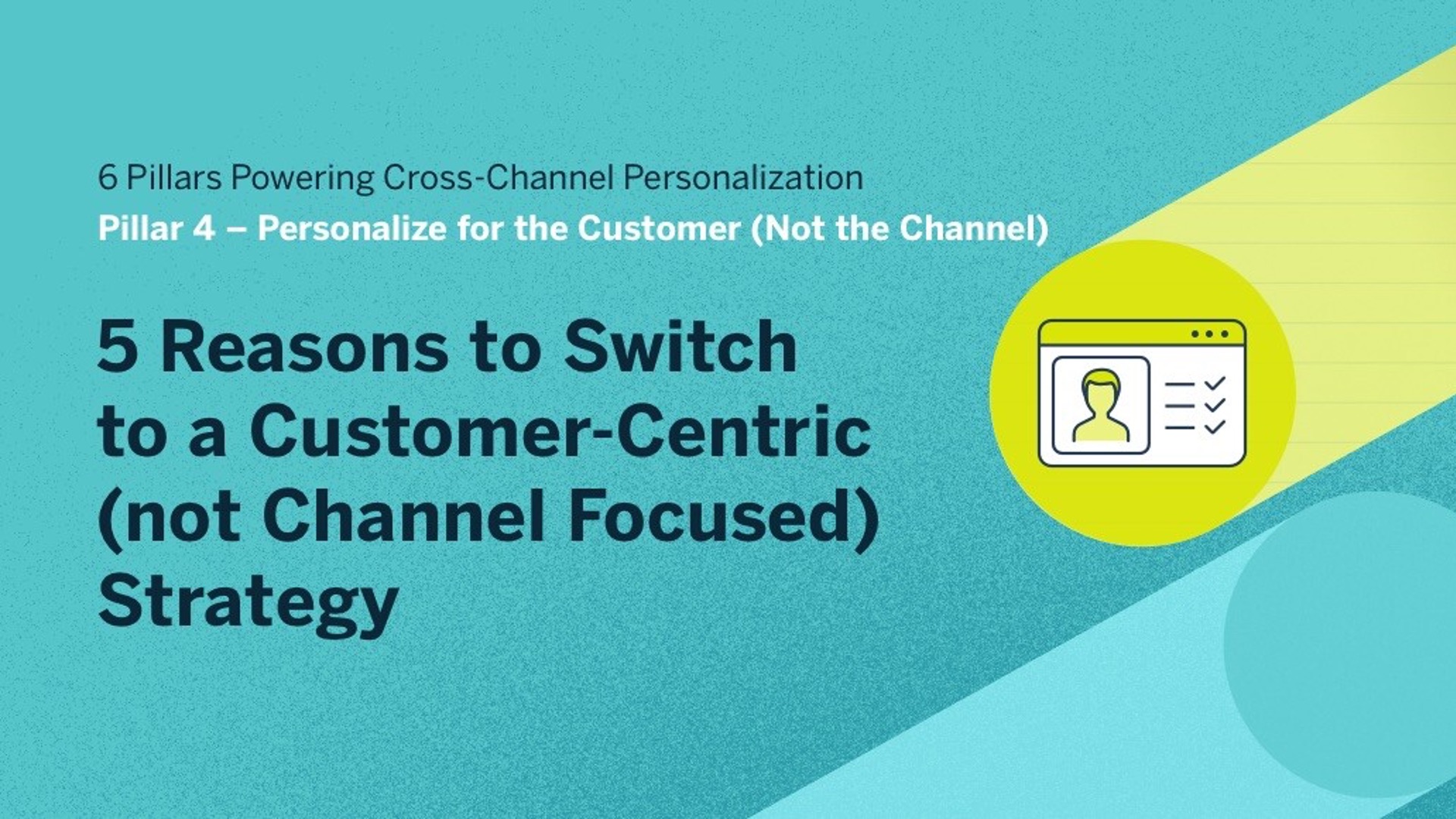This article is the fourth in our 6 Pillars of Cross-Channel Personalization series. Grab your copy of the full-length whitepaper breaking down all six pillars here.
In today’s day and age, meeting customers where they are means almost everything.
Many retailers believe that a channel-focused strategy will allow them to tout themselves as “omnichannel” or as a multichannel retailer. However, they are highly mistaken in this thinking. Making the transition to a customer-centric strategy is one that just might save your business with the uncertain times to come.
Why Your Business Needs to Switch to a Customer-Centric Strategy
In this post, we’ll explain the five main reasons to switch to a customer-centric strategy, rather than a channel-focused one.
Customers See a Singular Picture
No matter how many channels in your marketing arsenal, … the customer is not going to applaud or credit you for having them. The customer will view it all as just one holistic experience to spur them to purchase your product or service.
So, if you focus on social media as your only marketing channel, even done well, you might be losing out on others who are not fond of social media (even within your target audience segment).
On the other hand, if someone who views your ads on social media hears their mother saying she also saw an advertisement for the same product on television, they will undoubtedly be impressed as they will see how widely known your brand is. That is why it is important to consider all the plausible customer segments for your business, instead of just hyper-focusing on one segment.
Even though your target audience needs to be predetermined, no channel should be neglected. Each might reach segments within your target audience more than the other channels.
A channel-centric approach leaves some people out while neglecting to account for others who care only about the value they get with you and not necessarily where they get it.
Chances of Inconsistency
Usually, the big problem with focusing on one channel is that you end up sending a different message or content that’s not natively created for each channel. This confuses consumers and makes them doubt what your brand stands for.
On the other hand, if you focus on what the customer wants and send the same message through all your channels, this problem is easily avoided.
This is even easier to manage in the modern marketing landscape, with all the technology available to aid retailers to achieve the outcomes that matter . If you have an integrated customer engagement platform, then you will not have to worry about this issue. Any information that is inconsistent with the rest will be filtered out automatically before reaching the customer.
1:1 experiences for customers are essential for your marketing to be impactful. Technology is the perfect aid to make it possible.
The Power of Emails
By now, it’s a widely-accepted fact that email is most effective to gain real trust and build business affinity. That is why if you market appropriately through email, it will become easy to integrate the results and direct your audience to all your other channels.
Making use of the power of email will also help you do one more thing – it will help you shift your focus towards formulating the message that customers want to hear instead of the message that you want to send to them.
With the help of feedback tools, surveys and open- and click-through rate data, you can easily learn what messages are resonating most with your audience. With this key information, you can mold your message into something that customers want to hear.
So while email may be the means by which you deliver the message, it’s the message, the content and customer desire that trumps how the message is transmitted.
Channels Are Already Integrated
At this point, it is very difficult to separate traditional and modern media (and channels) for marketing purposes. Most campaigns are (or should be) integrated – meaning when you advertise through television or through the use of something like newspapers, it is a given that you’d also have a social media, email and web component.
So, again, it’s less about the channels and more about the cohesiveness of the message.
Brick-and-mortar brands can use the information that staff in stores collects about customers to inform your website and your mobile app experience, for example.
You also have to ensure that the experience customers get when they walk into your physical store mimics the one they get when they access your app or website via their phone.
The Weight of Notifications
As we all know, sending your customers (or app/email subscribers) notifications is one of the most common ways to get their attention.
But this is tricky because if you are not careful about the timing or the wording of your notifications, it can be off-putting for your customers and have the opposite effect than you intended.
If you already have a system in place that connects all of your marketing channels it will become much easier to know when to send a notification and what that notification should say. This will automatically increase the traffic coming to your business’ website and also the number of downloads of your business’ app due to word-of-mouth marketing.
Final Thoughts
A customer-centric approach acknowledges the importance of multiple avenues in the channel mix but places the value on the content, the message and the individual receiving it – not the mode through which it’s delivered.
When, where, and who is more important than “how” because the how has become commoditized.
The brands that will succeed are the ones who favor their individual buyers, not the next shiny object of whatever channel pops up.
To learn the six foundational pillars top marketing teams use for building a cross-channel personalization strategy that accelerates business outcomes, download the ebook.
Handpicked Related Resources:












